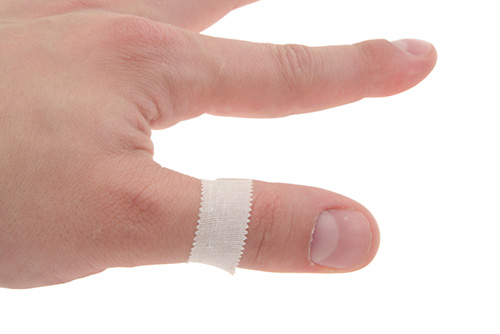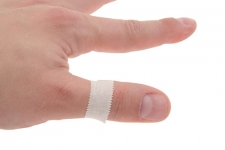Regardless of how the sprain occurs, you never quite realize just how valuable your thumb is until you’re not able to use it.
A stable, or healthy and uninjured thumb is extremely important for both pinching and grasping. “Jamming” or spraining your thumb causes an injury to the main ligament in the thumb, aka, the ulnar collateral ligament. A ligament is a soft tissue that connects two bones and helps create a stable joint. Tearing this ligament can not only cause pain and lack of mobility, but can also cause your ability to pinch and gasp to become weak and/or non-existent.

Spraining a thumb is usually noticed relatively quickly as pain is the first symptom. Other symptoms include tenderness, swelling, and bruising. Something you have a watch out for with athletes, in regards to virtually any injury, is their tendency to “shake it off” and try to play through the pain. Some are so competitive and/or “in the moment” that they may not even realize that an injury has occurred, which is why it’s vital for coaches and trainers to be on the lookout for signs that an athlete has sustained an injury.
Assuming that a thumb injury has occurred, don’t just brush it off. A sprained thumb is often ignored with the hope that it will heal itself. If this ligament injury is not diagnosed and treated properly, it may lead to chronic instability and weakness. It can even lead to arthritis down the road.
So, what should you do? See a doctor as soon as you’re able. We know that might not be right away, but getting examined as soon as possible can avoid a lot of heartache and pain in the long run. For instance, an orthopaedic surgeon can examine your thumb and via manipulation and, possibly, x-rays, determine if the ligament is partially torn, completely torn, or if a break in a bone has occurred.
If the ligament is only partially torn, you’ll probably wind up with either a splint or a cast for several weeks to immobilize your thumb joint and allow the tear to heal. Pain and swelling – both of which are common – can be alleviated by applying ice packs several times a day for the first few days after the injury. After these first few weeks, your orthopaedic doctor will have you start a course of strengthening exercises for your thumb. When you’re not doing your exercises, you’ll probably still be required to wear a brace, just to make sure you’re keeping it still and not overdoing it too much.
If the ligament is completely torn, your orthopaedic surgeon will discuss surgical options to treat the tear.
Jamming/spraining your thumb IS a big deal. Especially when you consider that ignoring it could lead to bigger problems down the road. Fortunately, here at Prairie Orthopaedic, we have the best orthopaedic team in Lincoln – complete with in-house imaging and physical therapy. Give us a call today to schedule an appointment and let us help you get back to doing all the things you love to do!

